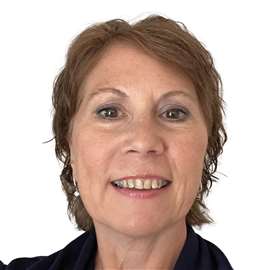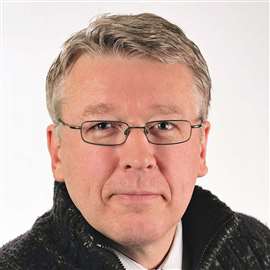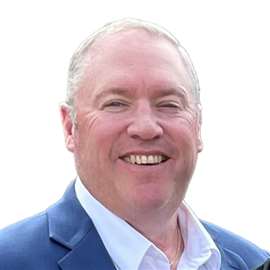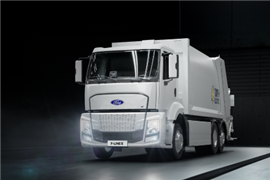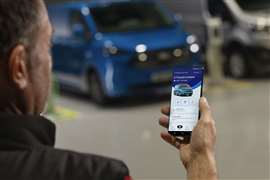Read this article in Français Deutsch Italiano Português Español
JBM Electric Vehicles targets electric bus sales outside India
09 October 2025
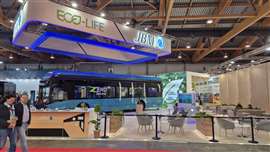 JBM Electric Vehicles stand at Busworld 2025 (Photo: PPI)
JBM Electric Vehicles stand at Busworld 2025 (Photo: PPI)
JBM Group has been producing components for automotive OEMs in its home market of India and other regions around the world for about 40 years. Leveraging this experience, in 2015 the group formed a company to manufacture buses for the national market. Instead of diesel, these were powered by engines running on compressed natural gas.
Following on from this, JBM Electric Vehicles was formed in 2020. While still in the bus business, the CNG powertrains were replaced with battery-electric drives. “The company is now one of the largest electric bus manufacturers outside China,” says Dushyant Sharma, general manager and group head of Corporate Communications and Branding.
At its headquarters near New Delhi, JBM Electric Vehicles has the capacity to produce up to 20,000 buses each year. Everything is done in-house, from assembly of the chassis, through to fabrication of the bus bodies and production of the electric drives. “The plant was setup to be a global manufacturing hub to produce vehicles for customers in India and also export markets,” explains Sharma.
Government support
It risks stating the obvious to say that India is a very large country which also has some very large cities – New Delhi is about 50 kilometres wide, not including the various satellite cities which surround the capital. It might appear that these urban expanses could play against electric buses, but that is not the case.
“I would say that India is a leader in this e-mobility sector,” says Sharma. “The buses have the range to complete even the longest routes, while every electric bus means reduced vehicle emissions in what are very polluted areas. The vehicles have been developed to suit the use-case in cities.”
Continuing, Sharma says that there are now about 3,000 electric buses operating in cities around India; about half of these are in New Delhi. But he points out that this is only the start of what amounts to a full transition of public transport in India. For example, in 2022 the national government launched its National Electric Bus Program, an initiative which aims to have 50,000 electric buses operating around the country by 2030.
Further, the PM-eBus Scheme, announced in 2023, has $2.4 billion to support deployment of up to 10,000 electric buses in 169 cities, which would further include a 10-year operations subsidy using a public/private partnership model.
Eco Life bus
On the stand at Busworld 2025, the biennial event which is one of the largest bus trade shows in the world, JBM Electric Vehicles had its 12-metre Eco Life model on display. Within the steel monocoque body is a Dana HV2200-6P traction motor (250 kW peak) which is powered by a customisable number of battery packs using advanced lithium-ion cells.
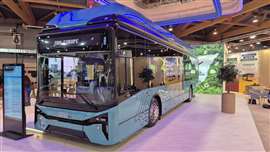 JBM Eco Life will be marketed in Europe through the new company office in Frankfurt (Photo: PPI)
JBM Eco Life will be marketed in Europe through the new company office in Frankfurt (Photo: PPI)
Other features include a dual-gun (twin charging points) DC ultra-fast CCS2 charging system; axles and front suspension come from ZF, while the air brake system is from Wabco. There is also a suite of ADAS technologies, including forward collision and blind spot warning systems, together with a drowsiness alert for the driver. There is even a system which prevents cyberattacks.
Pointing at the bus on the stand, Sharma states that it has a range of about 400 kilometres. But that can be changed to deliver the required driving distance. “There’s no point having a bus with a 400 km range if the route is only 60 km,” he advises. “That’s extra cost, extra weight which doesn’t serve a useful purpose. Fast charging at the depot can support additional shifts.”
JBM Electric Vehicles effectively leases the buses to each locality where the vehicles are deployed. As part of the deal, the company also manages installation of the necessary charging points and connection to the grid. The buses are also maintained using third-party companies appointed by JBM.
“We’ve developed a full electric bus ecosystem,” explains Sharma. “We don’t only manufacture the vehicles, we also have the largest battery plant in India. We do charging, we do maintenance, also operations. It’s an entire end-to-end service.”
It’s a particularly useful model for local governments with little experience with electric vehicles. JBM can manage the entire operation, even sourcing trained drivers. Sharma states that the service can help to reduce the total cost of ownership, which might otherwise be prohibitively high given the cost of electric buses over their diesel equivalents.
“The cost of an electric bus is definitely higher than that of a diesel or CNG model,” he says. “But when you factor that out over a 12-year period, which is the lifetime of the electric bus, plus you include the cost of running the service, the total comes down a lot because electricity is cheaper than diesel fuel.”
Another part of the operations deal is what’s called the Gross Cost Contract. Essentially, this sets the payment from the government to JBM on a kilometres-driven model.
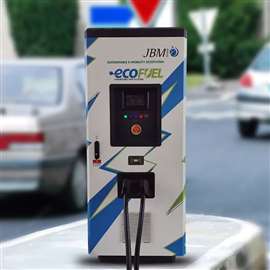 JBM offers Electric Mobility-as-a-Service in India (Photo: JBM)
JBM offers Electric Mobility-as-a-Service in India (Photo: JBM)
“I’m supplying my buses to the government, but I’m also operating my buses on behalf of the government, on a per-kilometre basis. So with this there is actually zero initial cost to the government,” says Sharma. “This is the model we’re rolling out across all states in India. We also maintain the bus, which is self-supporting as beyond an agreed minimum number of kilometres, if they don’t run then we won’t get paid.”
European sales
It’s unknown whether a similar setup would work in Europe; Sharma puts forward that this model has only been offered in India. But beyond that, he says that the goal of being at Busworld is to grow brand awareness and ultimately sell the Eco Life to European customers.
Asked if any changes were made to gain type approval to sell the vehicles to European customers, Sharma has this to say: “This bus was developed to meet European vehicle certification and there are some other changes to suit the market, such as the recyclability of some elements.”
The buses also have almost limitless customisation options. Looking at just the battery packs, these can vary in number and also position on the bus, whether on the roof, below the floor or boxed at the rear. Sharma recounts how buses recently delivered to a customer in Dubai were modified to handle the extreme climate.
As it is in India, it is European governments (city and state) which are largely responsible for supporting the switch from diesel to electric buses. As it stands, JBM Electric Vehicles appears well placed to take advantage of that on-going transition in the home market and beyond.
POWER SOURCING GUIDE
The trusted reference and buyer’s guide for 83 years
The original “desktop search engine,” guiding nearly 10,000 users in more than 90 countries it is the primary reference for specifications and details on all the components that go into engine systems.
Visit Now
STAY CONNECTED




Receive the information you need when you need it through our world-leading magazines, newsletters and daily briefings.
CONNECT WITH THE TEAM
